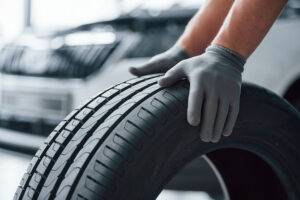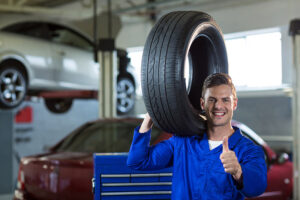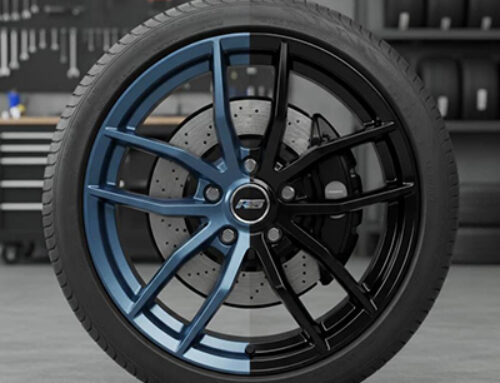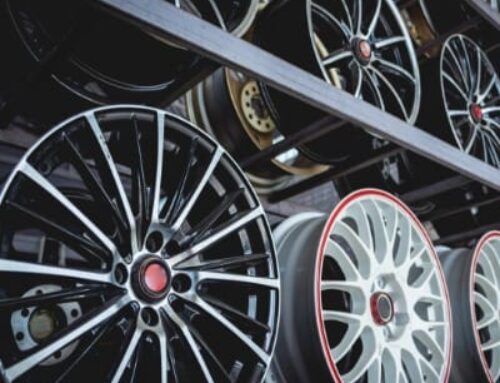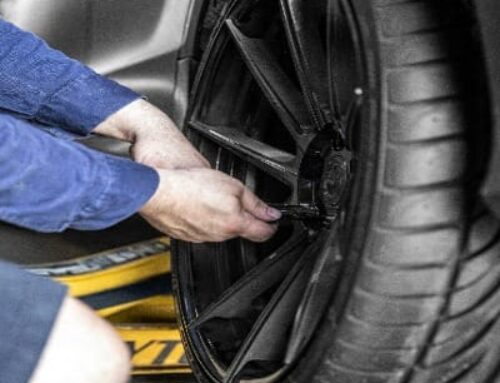
Maintenance of car tires: Complete guide
Do you know how to correctly take care of your tires?
This complete guide to the maintenance of car tires will help you extend their lifespan, improve safety, and even save money on fuel.
The best and most recommended practice is always a monthly check-up by a qualified professional. This ensures optimal performance, better handling, and higher fuel efficiency.
However, besides professional inspections, there are several simple but crucial steps you can take to keep your tires in top condition. Let’s explore them:
However, in addition to the monthly checkup, we can find several ways to take care of your tires. Let’s see what they are:
Key Tips for Proper Tire Maintenance
1. Monitor Tire Inflation Pressure
Always check your tires when they are cold using a reliable tire pressure gauge.
-
Keep the inflation pressure at the level recommended by your vehicle’s manufacturer (you can find this in the vehicle manual or on the information placard inside the car).
-
Underinflation is the leading cause of tire failure.
-
Overinflation increases stiffness, negatively affecting handling and comfort.
2. Avoid Over-Spinning Your Tires
If your vehicle gets stuck in mud or sand, avoid aggressive spinning of the wheels.
-
Spinning freely generates excessive centrifugal force, which can lead to sudden blowouts.
-
Instead, use a gentle rocking motion (moving back and forth) to free your vehicle safely.
⚠️ Warning: Never stand directly behind a car stuck in mud or sand. If a tire explodes, people in that position are at higher risk of serious injury.
3. Don’t Attempt DIY Tire Mounting
Improper procedures during the mounting process can cause explosions of the tire/rim assembly, leading to severe injuries. Always rely on a professional for this service.
4. Avoid Overloading Your Vehicle
Check your vehicle’s manual to understand its load limits.
Overloading increases stress on your tires and other mechanical components, leading to:
-
Poor handling
-
Higher fuel consumption
-
Increased risk of tire failure
5. Inspect Tires for Wear and Damage
Worn-out or slick tires are one of the most common causes of accidents in wet conditions.
-
Tires with low tread are more prone to skidding and punctures.
-
Regularly check for cracks, cuts, or irregular wear.
-
Replace them immediately if they show signs of severe wear.
FAQs About Maintenance of Car Tires
✅ How often should I check my tire pressure?
➡️ At least once a month, and always before long trips.
✅ What is the minimum tread depth for car tires?
➡️ Most experts recommend a minimum of 2/32 inch (1.6 mm). For rainy areas, more tread is safer.
✅ Can I rotate my tires myself?
➡️ Yes, but it is recommended to have it done by a professional to ensure correct alignment and balance.
✅ How long do car tires usually last?
➡️ With proper maintenance of car tires, they typically last between 25,000 and 50,000 miles, depending on the brand, driving style, and road conditions.
✅ What are the signs I need to replace my tires?
➡️ Uneven wear, low tread depth, bulges, vibrations while driving, or frequent loss of air pressure.
Following these recommendations for the maintenance of car tires will not only extend their life but also improve your safety and driving comfort.
Remember, these steps do not replace a monthly professional check-up, which ensures your tires are always in optimal condition. Always refer to your vehicle’s manual since different tire brands and models may have unique specifications.
For a deeper understanding of how tire pressure impacts your driving, don’t miss our guide on How Tire Pressure Affects Vehicle Performance and Safety.
And if you want practical tips to keep your tires in top condition, check out How Can I Check if My Tires Are Properly Inflated?.

